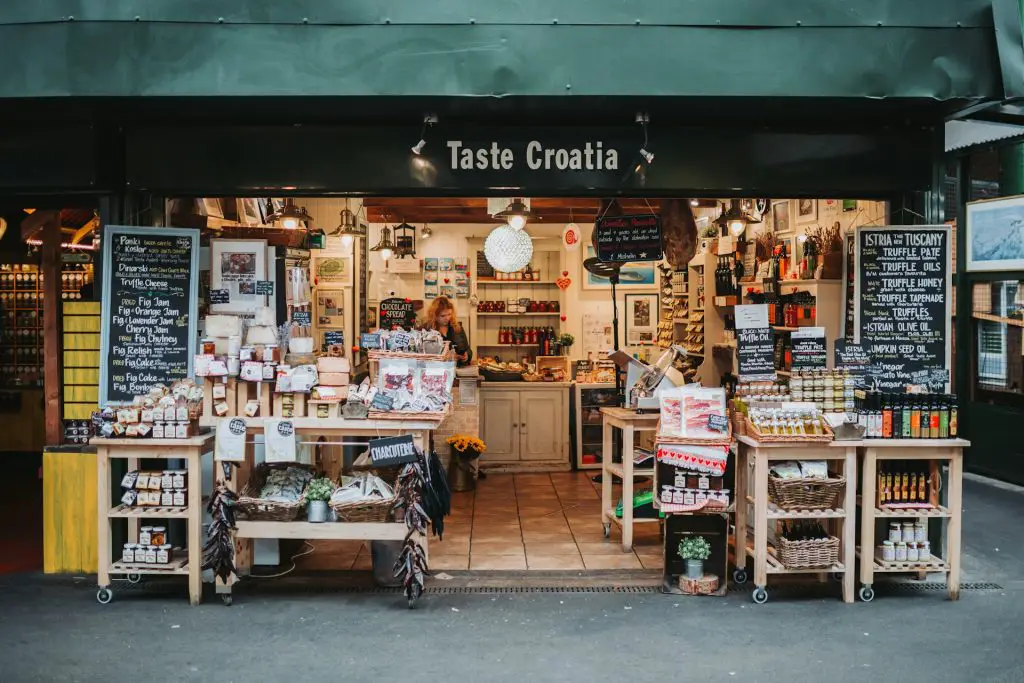Croatia and Italy, two neighboring countries located in the heart of the Mediterranean, are renowned for their rich culinary traditions. Both have earned a place in the hearts of food enthusiasts worldwide, with their diverse and flavorful dishes. In this article, we will embark on a culinary journey to explore the similarities and differences between Croatian and Italian cuisines. While these two cuisines share some common elements due to their geographical proximity, they also have distinct characteristics that make each unique and delightful in its own way.
Historical and Geographical Influences
To understand the similarities and differences between Croatian and Italian cuisines, we must first delve into the historical and geographical factors that have shaped their culinary traditions.
Croatian Cuisine:
Croatia, situated along the Adriatic Sea, boasts a coastline that stretches for over 5,800 kilometers. This coastal location has had a significant impact on Croatian cuisine, as seafood plays a prominent role in many traditional dishes. The historical influences of Croatia’s past, including Roman, Venetian, Ottoman, and Austro-Hungarian rule, have also contributed to the diversity of flavors and ingredients in Croatian cooking.
Italian Cuisine:
Italy, often regarded as the birthplace of Western cuisine, is known for its rich culinary heritage. The Italian Peninsula is home to diverse regions, each with its own unique culinary traditions. Italian cuisine has been heavily influenced by ancient civilizations such as the Etruscans, Greeks, and Romans, as well as later influences from the Byzantine Empire, Arab traders, and the Spanish. Italy’s fertile land, temperate climate, and access to the Mediterranean have allowed for a wide variety of ingredients to thrive.
Shared Ingredients and Flavors
One of the striking similarities between Croatian and Italian cuisines is the abundant use of fresh, locally sourced ingredients. Both cuisines emphasize the importance of high-quality produce and artisanal products. Here are some shared ingredients and flavors:
Olive Oil: Olive oil is a staple in both Croatian and Italian kitchens. The Mediterranean climate of both countries provides the ideal conditions for olive cultivation, resulting in some of the world’s finest olive oils.
Seafood: Due to their coastal locations, both countries have a strong tradition of seafood dishes. Grilled fish, calamari, and seafood risotto are popular in both Croatian and Italian coastal regions.
Herbs and Spices: Mediterranean herbs like rosemary, oregano, basil, and thyme are commonly used in both cuisines. They add aromatic and savory notes to dishes.
Pasta: While pasta is often associated with Italy, Croatia also has its own pasta varieties, such as fuzi and njoki, which are reminiscent of Italian pasta shapes.
Wine: Both countries have a long history of winemaking, and their vineyards produce a wide range of grape varieties. Croatian wine regions like Istria and Dalmatia offer unique wines that complement local cuisine.
Distinct Regional Characteristics
Despite these similarities, Croatian and Italian cuisines have distinct regional characteristics that set them apart.
Croatian Cuisine:
Coastal vs. Inland: Croatian cuisine varies significantly between the coastal regions and the inland areas. Coastal dishes are heavily influenced by seafood, while inland cuisine leans towards heartier meat-based dishes.
Peka: A traditional Croatian cooking method involves slow-cooking meats and vegetables under a bell-shaped lid, known as a “peka.” This method is popular in Dalmatia and adds a distinctive flavor to Croatian dishes.
Influences: The historical influences mentioned earlier have left their mark on Croatian cuisine. You can find Ottoman-inspired dishes like cevapi (grilled minced meat), Austrian-influenced pastries, and Italian-inspired pasta dishes in different parts of Croatia.
Italian Cuisine:
Regional Diversity: Italy is known for its regional diversity in cuisine. Each region has its own specialties and variations of dishes. For example, the pasta shape, sauce, and ingredients used in a dish can vary greatly from one region to another.
Cheese and Wine: Italy is famous for its cheese varieties, such as Parmigiano-Reggiano, mozzarella, and pecorino. Italian wine regions, like Tuscany and Piedmont, produce world-renowned wines like Chianti and Barolo.
Pizza and Pasta: While both pizza and pasta are beloved worldwide, they have countless regional variations in Italy. Neapolitan pizza, Sicilian pizza, and dishes like Bolognese sauce showcase the diversity of Italian cuisine.
While Croatian and Italian cuisines share some common elements, they each have their own unique characteristics that reflect their historical influences and regional diversity. Both offer a delicious journey through the flavors of the Mediterranean, with fresh ingredients, rich traditions, and passionate culinary artisans. Whether you find yourself savoring seafood by the Croatian coast or enjoying handmade pasta in an Italian trattoria, you’re sure to appreciate the culinary treasures of these neighboring nations. So, the next time you’re seeking a taste of the Mediterranean, consider exploring both Croatian and Italian cuisine to fully appreciate the richness of this culinary tapestry.
Exploring Fusion Cuisine
In recent years, the culinary world has seen the emergence of fusion cuisine, which combines elements from different culinary traditions to create exciting and innovative dishes. The proximity of Croatia and Italy has led to the development of Mediterranean fusion cuisine, where chefs draw inspiration from both countries to create unique and tantalizing dishes. Here are a few examples:
Seafood Risotto with Adriatic Flavors: A fusion dish that combines the creamy texture of Italian risotto with the rich flavors of the Adriatic Sea. It might include ingredients like Croatian scampi and Italian saffron for a luxurious and aromatic experience.
Istrian Pasta with Truffle Cream Sauce: Istria, a region shared between Croatia and Italy, is renowned for its truffles. This dish blends Croatian pasta, such as fuzi, with a rich truffle cream sauce inspired by Italian cuisine.
Grilled Octopus with Italian Polenta: Grilled octopus is a favorite along the Croatian coast, and when paired with creamy Italian polenta, it creates a harmonious fusion of textures and flavors.
Dalmatian Pizza: Drawing from the Italian tradition of pizza, Dalmatian pizza incorporates Croatian ingredients like Dalmatian prosciutto (prsut) and local cheeses to create a unique and savory pie.
Pasta with Adriatic Pesto: Combining Croatian herbs, olive oil, and Italian pasta, this fusion dish highlights the best of both culinary worlds in a single plate.
The Beauty of Culinary Diversity
Croatian and Italian cuisines are like two siblings with a shared heritage but distinct personalities. Their similarities in ingredients and flavors offer a sense of familiarity, while their unique regional characteristics provide endless opportunities for exploration and culinary discovery.
Food enthusiasts and travelers can revel in the diverse tastes and culinary traditions of both Croatia and Italy. Whether you’re indulging in a hearty Croatian peka dish in a seaside tavern or savoring handmade Italian pasta in a rustic trattoria, each bite is a testament to the rich history and cultural diversity of the Mediterranean.
Ultimately, the question of whether Croatian food is similar to Italian food is not about finding a definitive answer. It’s about celebrating the beauty of culinary diversity, embracing the shared ingredients and flavors, and savoring the distinctiveness of each cuisine. So, whether you’re a fan of Croatian or Italian cuisine, or both, there’s no denying the deliciousness and authenticity of these Mediterranean culinary traditions. The best way to appreciate them fully is to savor each bite and explore the endless possibilities they offer to the world of gastronomy. Bon appétit! Buon appetito! Dobar tek!




